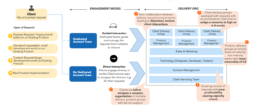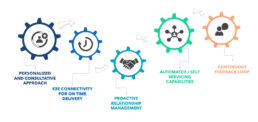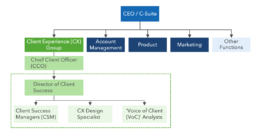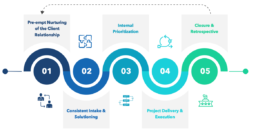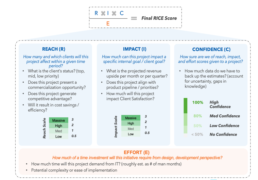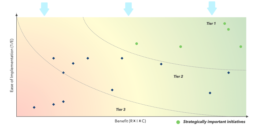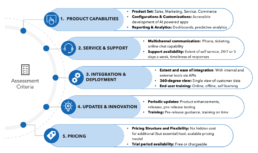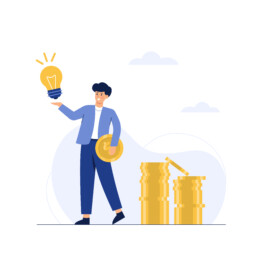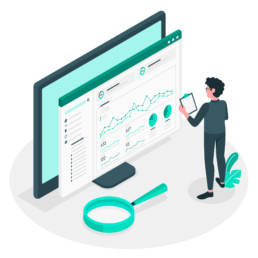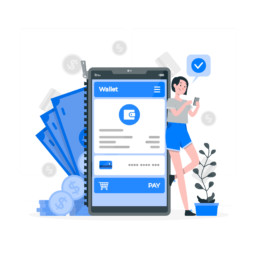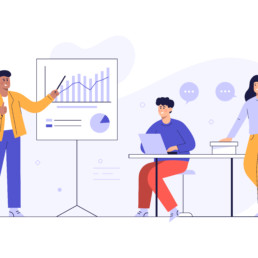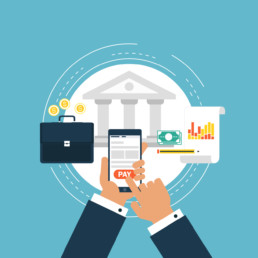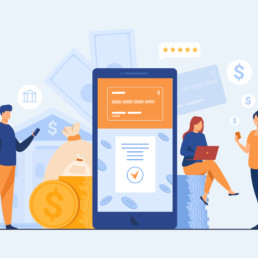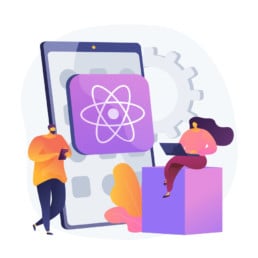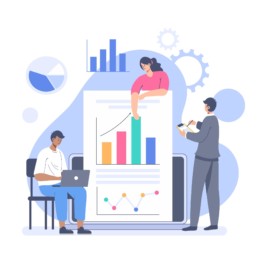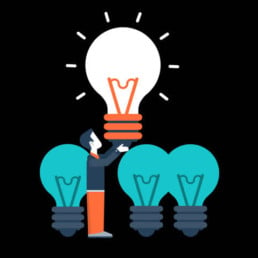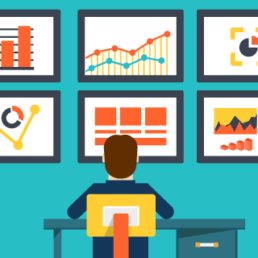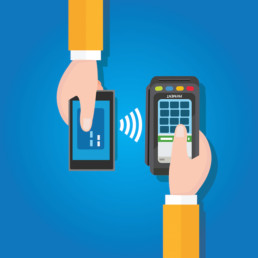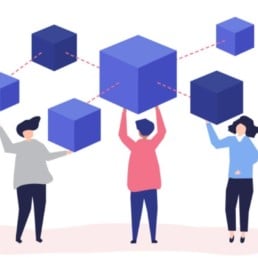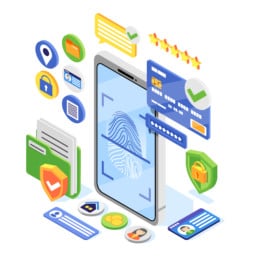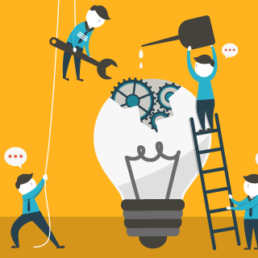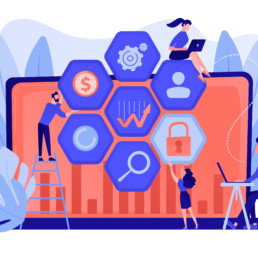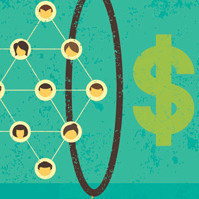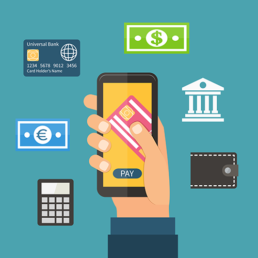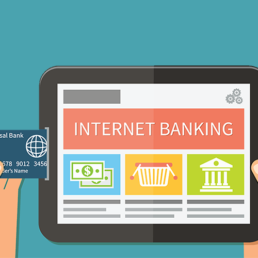B2B is Fundamentally Different
Leading B2B firms are very well aware that their client delivery experience needs to have the same levels of service, responsiveness, transactional ease as any digital consumer experience. Majority (72%) of B2B buyers expect a similar experience on a B2B site as they get on a consumer website (1).
Even though stakes are higher with large B2B clients, the client delivery experience significantly lags B2C experiences due to unique challenges (see Exhibit 1 below). Firstly, B2B journeys are longer, technical, and more complex as clients often need to interact with various contacts/departments such as sales, account management, service, technical support each with different incentives and goals. Secondly, B2B firms have to offer and optimize bespoke journeys based on type of client relationship, to be able to deliver differentiated experiences that boost loyalty.
At the very core, success for any B2B firm depends on the strength of its client relationships, and its ability to capitalize on the moments that matter. In this paper, we discuss typical causes for friction in B2B client relationships, key tenets of a successful client-provider relationship, and share our perspective on how best to delight clients in spite of these challenges.
Exhibit 1. Illustrative B2B Client Delivery Model
Where Most Firms Go Wrong
Most B2B firms generate a large portion of their revenue from a handful of strategic accounts. Thus, even slightest service / delivery failure can have potentially catastrophic financial consequences. In our experience there are several root causes for such failures:
1. Delivery Process
- High and growing volume of requests with poor upfront screening. This can often lead to turnaround times of up to several months for complex requests
- Long, arduous prioritization process with superfluous project requests and incomplete requirements resulting in wasted IT effort; on average 30%+ of project cancellations are due to inaccurate requirement gathering, and 25%+ due to inaccurate time estimation (2)
- Non standardized and inefficient solutioning process. A white glove approach may be taken for all types of clients. Standard procedures and timelines may not be defined, resulting in high variability and inconsistent engagement of teams (product management, tech etc.)
- Poor predictability of incoming demand; for a North American fintech, customer demand exceeded allocated capacity by 1.5x leading to frequently missed delivery times
2. Roles & Responsibilities
- Dispersed accountability for client experience (CX) across groups / stakeholders. Inconsistent status updates to clients, with no singular point-of-contact for long term relationship planning
- Functional silos with ineffective linkages e.g.
a) mis-alignment of expectations between the Sales promise and delivery capabilities
b) weak collaboration between account and delivery teams on strategic roadmap and involvement in project lifecycle
3. Tools & Performance
- Fragmented project management tooling with limited or no enterprise-level integration, resulting in manual, duplicative work e.g., a North American fintech required manual entry of 80-100 fields for every project in Clarity. With ~700 projects open at any time, this contributed to overhead costs of ~20% and delayed booking revenue by weeks
- Manual management of ‘development hours’ contracted to a specific client. In one case, this resulted in ~30% missed entries with mid project scope changes and associated revenue loss
- No self-service tool for low-complexity, standard requests
- Minimal/inconsistent tracking of client satisfaction and delivery KPIs at each step of the delivery process, with no enterprise level reporting and governance to troubleshoot and resolve performance issues proactively
Exhibit 2. Best-in-class B2B Client Delivery
Exhibit 2 outlines the key tenets of a successful, sustainable, and profitable B2B relationship.
Personalized & Consultative Approach:
For a B2B relationship, personalization should include:
1. Joint solutioning/innovation sessions with the clients on strategic opportunities
2. Helping clients validate and convert early concepts/ideas into tangible projects
3. Providing them regular access to industry intelligence and functional expertise. e.g., ING adopts the PACE (3) methodology to co-create solutions with the clients, validate their problems, kill non-viable ideas, and prioritize projects. PACE is a phased approach (see Exhibit 3) with experiment loops to test assumptions that need to be correct for for the solution to succeed.
Exhibit 3. ING’s PACE Methodology
End-to-end Connectivity:
Strong integration between back and front-end functions (link finance, accounting, ERP with support, customer, sales, product management for example) to ensure on time consistent and reliable experience to clients. e.g., J.P. Morgan’s Treasury Ignition plug-in uses APIs and file-based connectivity to seamlessly integrate payment and banking functionality directly into the ERP tool. Clients can download and install this simple plug-in and activate it without costly and lengthy technology implementations. This integration makes it possible for the bank’s clients to pay their vendors directly, track payments and reconcile bills instantaneously (4).
Proactive Relationship Management:
Rather than operating on a ticket-by-ticket system, relationship managers must understand clients well enough to be able to pre-empt their needs proactively. They should offer ongoing suggestions for improvement and/or best practices to strengthen their position as a valued partner. E.g., General Electric operates two customer experience centers where new and current customers can visit the center and discuss a personalized plan with customer experience representatives. Customers can also iterate designs and print prototypes at the facility. They can access GE’s team for field service knowledge and operational support, or contract with GE’s ‘Addworks’ program to collaborate with engineers on product identification, design and additive facility setup (5). Similarly, Workday has designed Workday services that encompass deployment, education, training and support in the form of dedicated customer success manager, certified Workday and partner experts to make the best use of Workday’s products and services.
Automated / Self Servicing Capabilities:
While B2B client issues can often be very demanding and high touch, there is merit in launching self-service options for small, repeatable and scalable tasks. This can include an online portal with FAQs, product documentation, how-to guides, video tutorials, and knowledge base articles; a client dashboard to check status, provide feedback, raise project and service requests etc. For example, HSBC rolled out a cash flow forecasting tool for its business clients to build a more accurate picture of their future finances and manage liquidity across all their accounts. This tool automatically loads data from various accounts of a business and generates detailed cash forecasts three years out with modeling and scenario testing, as well as variance analysis that underlines differences between forecasts and performances (6).
Continuous Feedback Loop:
This includes active and ongoing tracking of client sentiment, delivery performance and employee engagement metrics. Real time performance dashboards, fully accessible across the entire organization can enable quick, data-driven decision making on priority areas. For example, Slack actively encourages and addresses customer feedback. Within the app itself it encourages feedback through an ever-present feedback button, and publicly solicits feedback on how to improve features. Slack continuously enhances its product based on this feedback, fine-tuning existing features and adding new capabilities. The results: a 97% customer satisfaction (CSAT) score, annual recurring revenue growth of more than 100% (7).
Getting the Basics Right
Enabling a delightful client experience requires not only knowing what the client wants, but also seamlessly collaborating across internal functions to make it happen. It also requires leaders to focus on client journeys that matter the most, the best metrics to target, and employee incentives that are aligned to these objectives. In our experience, addressing this challenge requires effort on three fronts. First, establishing a dedicated client centric organization to simulate cross functional activities. Second, following a consistent, standardized end-to-end delivery process. Finally, it is necessary to set up the correct tools and metrics to inculcate the right behaviors across soiled units.
1. Dedicated Client Experience Organization
A dedicated / centralized team responsible for overseeing and executing the customer experience strategy ensures a clear CX vision that is easy to articulate across segments, functions, and locations. The Chief Client Officer champions the client, views and measures everything from the client’s perspective, and ensures leadership support and alignment in embedding the CX strategy within all functional areas in a sustainable way. While the size and the profile of the CX team depends on the maturity of the firm, team members are responsible for bringing industry best practices, uncovering CX improvement opportunities, and enhancing the client journey.
Exhibit 4. Example of a Dedicated CX Group
Typical roles in the CX team may include:
Director of Client Success: Builds/leads the entire CX team, ensures cross silo activity to drive initiatives, reviews performance reports and shares with wider leadership / teams
Client Success Manager: Boosts client satisfaction by helping clients succeed in their business goals, pre-empt client needs, conduct check ins, drive solutioning, act as client advocate
CX Design Specialist: Applies experience design principles to optimize client journeys, runs focus groups with internal stakeholders to capture insights, understand client expectations and pain points
‘Voice of Client (VoC)’ Analyst: Translates client feedback gathered from multiple sources into actionable insights to guide the business teams in identifying areas for improvement
2. Consistent, standardized delivery process
Key components of a consistent, standardized delivery process include:
a) Pre-emptive Client Nurturing: Account teams should maintain a bird’s eye perspective across the client lifecycle. They should facilitate joint planning sessions with the client and internal product and client success teams. They should also discuss client needs / priorities in QBRs to plan capacity for projects in near future.
Exhibit 5. B2B Client Delivery Process
b) Consistent Intake & Solutioning: There should be a seamless intake process of understanding and capturing client needs and requirements before turning them into a project. A tight knit and cross functional team of account managers, solution consultants, delivery architects must be involved upfront to validate the client’s needs and define solutions (e.g., off the shelf product or custom solution) with the client. The solutioning phase is also an opportunity for firms to demonstrate their product, client, and industry understanding, as well as set expectations and formalize the scope of the work/project needed to implement the solution.
c) Internal Prioritization: Given limited time and resources, each solution above must go through an internal go/no go decision before handing it off to IT teams for fleshing out the technical requirements, estimating the effort, and slotting it in their queue. While there are dozens of popular methodologies to prioritize projects and product enhancements, the RICE scoring model is one of the most simple and convenient models used by product managers. There are four components in the RICE scoring model – Reach, Impact, Confidence and Effort. It enables firms to make informed decisions and objectively evaluate potential projects. This model can be adapted based on the data availability, type of business, clients and strategic priorities of any B2B firm. A sample RICE framework is shown on next page.
Exhibit 6. Prioritization Framework
d) Project Delivery & Execution: Once projects are approved and the client signs off, the delivery process beings, starting with assignment of a project manager, delivery, technology team etc. Clients should be informed of all resources available for support as well as steps / tasks in their project. An ongoing cadence should be established to provide regular status updates, discuss risks/issues. While project managers run these meetings, the account teams should be kept informed and up to date. Project managers must maintain a detailed, client facing project plan to track client as well as internal milestones. Day to day tracking of project lifecycle phases (Design, build, test, deploy) can be carried out in tools like JIRA.
e) Closure & Retrospective: This step involves training the clients on the solution implemented and a final handoff to servicing teams for ongoing support. At this stage, feedback from both the clients and internal teams must be captured to identify issues during the delivery process, disjointed experiences and interactions. An internal retrospective meeting should be held at regular intervals to review client satisfaction, delivery/operational metrics, ways to increase efficiency, opportunities to improve the client experience.
3. Tool Selection and Metrics Tracking
Speed and responsiveness are critical when handling large B2B client relationships. Clients must have access to accurate information, timely project updates, and multi channel support (chat, phone, app, text etc.) for product issues and inquiries.
A client lifecycle management tool that is flexible, intelligent and offers a single view of the client helps in delivering personalized experiences as well as maintaining up-to-date insights into operations. The exhibit below suggests criteria for selecting the right tool.
Apart from measuring client satisfaction metrics, it is equally critical to keep an eye on the duration and issues encountered across the delivery journey. For journey transparency, metrics such as solutioning duration, # of approved projects, lead time, resolution time, client onboarding time, CSAT etc. must be defined at each step of the entire delivery process and tracked via the selected tool. Internal metrics must be linked back to client metrics to create consolidated view of end-to-end delivery. The selected tool should also have automated data tracking and visualization capabilities. Finally, to ensure actionability, there should be:
- clear ownership and accountability of KPIs with set targets and aligned incentives
- complete accessibility of performance data across the org through real-time dashboards and reporting
- forums to review insights from the metrics collected and enable data driven decisions
Exhibit 7. Tool Selection Criteria
In Closing...
While many B2C firms have made great strides in developing delightful client experiences, larger organizations are still behind. Decentralized and siloed, most B2B firms deliver experiences that are impersonal and disjointed. In our experience, B2B firms are still grappling with issues ranging from broken delivery processes, weak cross functional collaboration, capacity constraints, poor prioritization and performance tracking.
Any successful B2B client experience needs to be personalized, consultative, proactive and consistently deliver on time. Kepler Cannon’s approach to organization design, process engineering, metrics, and tool enablement makes us the ideal partner to enhance your client delivery.
__________________________________________________________________________________________________________
- Salesforce
- PMI Survey
- PACE, ING
- General Electric
- HSBC’s Cash Flow Tool
- Slack
